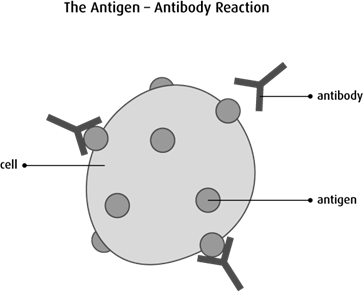The immune system
The immune system defends the body against infection and disease. Some parts of the immune system look for unhealthy cells or something foreign to the body, some send messages to other cells in the body about an attack and others work to attack and destroy micro-organisms that cause infections – like bacteria, viruses, fungi, parasites – or unhealthy cells, like cancer cells. When the immune system is defending the body against infection and disease, it is called the immune response.
Parts of the immune system
The immune system is made up of cells and organs that work together to protect the body and respond to infection and disease.
Lymphocytes
Lymphocytes are
T cells(
also called T lymphocytes) destroy damaged and infected cells in the body
and tell B cells to make
B cells( also called B lymphocytes) can turn into plasma cells that make antibodies that help fight infection and disease. B cells can also remember the types of infection and disease the body has fought against in the past. If the same germ gets into the body, B cells can quickly make more antibodies to help fight it so you don’t get sick.
Natural killer cells attack cancer cells or cells that are infected with a virus.
Antibodies
Antibodies (also called immunoglobulins) are proteins made by B cells that have turned into plasma cells. Antibodies travel around in the blood. They fight infection and defend the body against harmful foreign substances by recognizing and binding to a substance (like a germ) that is causing the body to have an immune response. The foreign substances or germs that antibodies bind to are called antigens.
A specific antibody is made by plasma cells to fight a specific antigen. An antibody binds to an antigen like a lock and key. So only an antibody made against a specific antigen can bind to it, much like a key can only open a specific lock. When this happens, white blood cells can find and destroy the substance that is causing an infection or disease.

Bone marrow
The bone marrow is the soft, spongy area inside of most bones, where blood cells are made. Many of the blood cells in the bone marrow are not fully developed (are immature) and are called stem cells. Stem cells change and grow into different types of cells, including blood cells. Most blood cells grow and mature in the bone marrow. Most blood cells leave the bone marrow and move into the circulating blood and other areas of the body, like the lymph nodes and tonsils, once they are mature.
Lymphatic system
The lymphatic system is the group of tissues and organs that make and store cells that fight infection and diseases. The lymphatic system includes the tonsils, spleen, thymus, lymph nodes, lymph vessels and bone marrow.
Skin and mucous membranes
The skin and mucous membranes are the body’s first line of defence against infection and disease. The skin prevents most germs from getting into the body. But a cut or burn on the skin can allow germs to get in.
Germs can also get into the body through any opening in the body, such as the mouth, nose, throat, anus or vagina. Mucous membranes that line many parts of these openings help to protect the body. Cells of the mucous membrane also make fluids and substances that help destroy germs. And in some areas of the body, mucous membranes are acidic, which also helps prevent infection from bacteria and other micro-organisms.
The immune system and cancer
Cancers of the immune system include
Cancer cells develop from our own cells, so our immune system doesn’t always know that it should attack them. Sometimes the immune system knows that cancer cells shouldn’t be there, but more often our immune system doesn’t notice cancer cells. Cancer cells can even turn off the immune response so that the immune cells don’t attack them.
Also, people with cancer often have a weakened immune system. The immune system gets weakened when the cancer itself or cancer treatment, like chemotherapy or radiation therapy, affects the bone marrow. Blood cells are made in the bone marrow and when it’s affected by cancer or its treatment, the number of blood cells that are made are lower than normal. When blood cell counts are low, the body can’t fight off an infection very well.
Cancer treatments and the immune system
Certain drugs can help the immune system fight cancer. Treatment using these drugs is called immunotherapy. Immunotherapy works by boosting the body’s immune response or helping the immune system to recognize and fight cancer.
A stem cell transplant( also called a bone marrow transplant) replaces the body’s immune cells. These are the blood cells made in the bone marrow that fight infection and disease. Stem cell transplants are mainly used in the treatment of cancers that affect blood cells, like leukemia, lymphoma and multiple myeloma. But stem cell transplants are also sometimes used in the treatment of other types of cancer including testicular cancer, retinoblastoma and neuroblastoma. The goal of a stem cell transplant is to get the body back to being able to make healthy blood cells, like lymphocytes, which play an important role in our immune system.
Learn more about immunotherapy and stem cell transplant.
Your trusted source for accurate cancer information
With support from readers like you, we can continue to provide the highest quality cancer information for over 100 types of cancer.
We’re here to ensure easy access to accurate cancer information for you and the millions of people who visit this website every year. But we can’t do it alone.
Every donation helps fund reliable cancer information, compassionate support services and the most promising research. Please give today because every contribution counts. Thank you.
